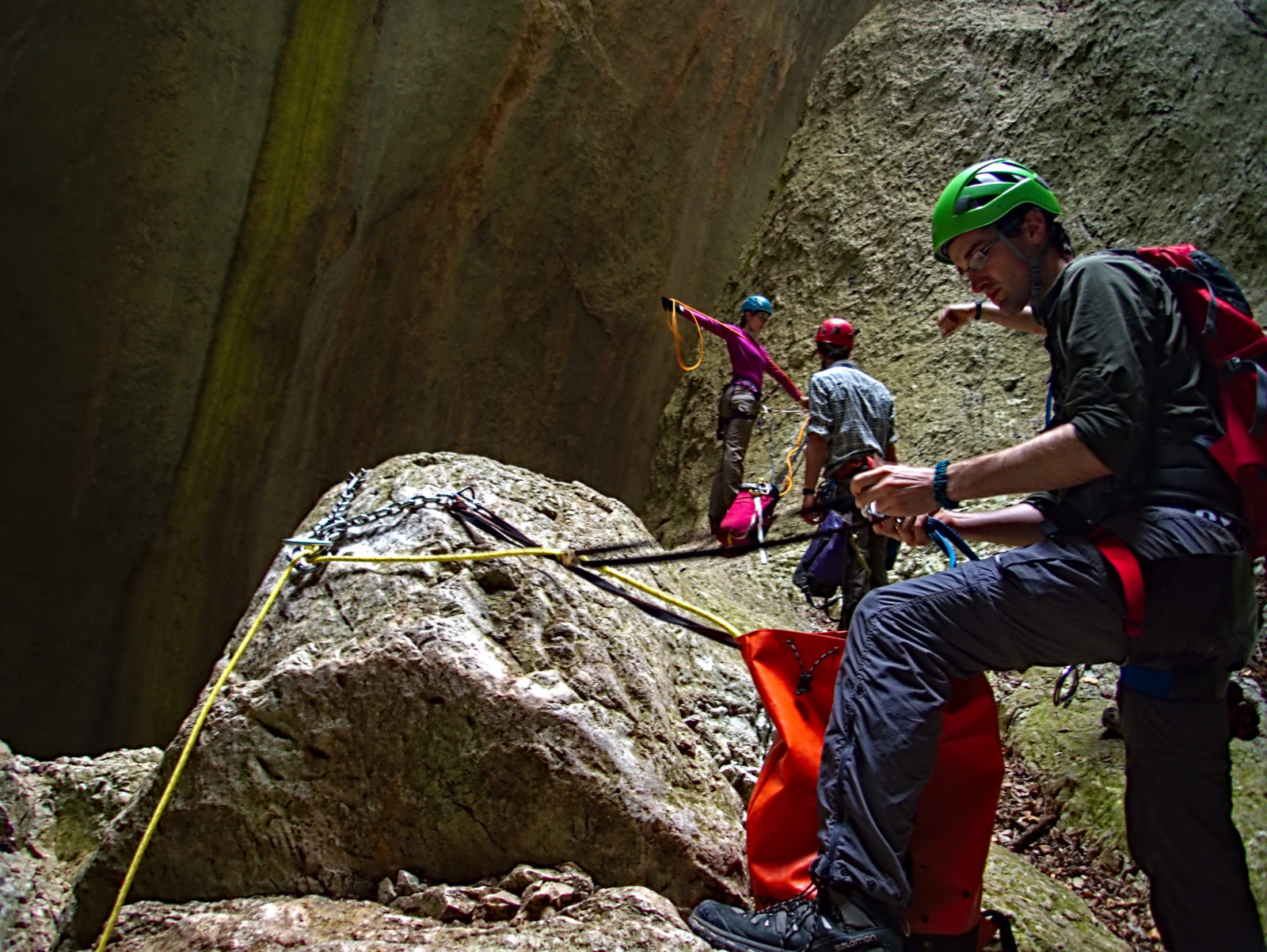Thursday 25th: Snorkelling
For our rest day we rented some snorkels from a dive shop in Cala Gonone, and drove a short distance north to Cala Cartoe. I enjoyed snorkelling, there were more fish than I thought and it was very relaxing to float motionless in the water, buffeted by the waves. I took some photos underwater, but it looks like I may have accidentally deleted them. Ah well!
Friday 26th: Cordula Caddaris
We wanted to do another wet canyon like Bacu sa Figu, but there aren’t so many of these in Sardinia, and along with the low rainfall most things were looking pretty dry. After some googling we found there was a canyon close to our apartment called Cordula Caddaris – this wasn’t in the guidebook, and we couldn’t find a topo, but the description on the German Canyoning database seemed good.
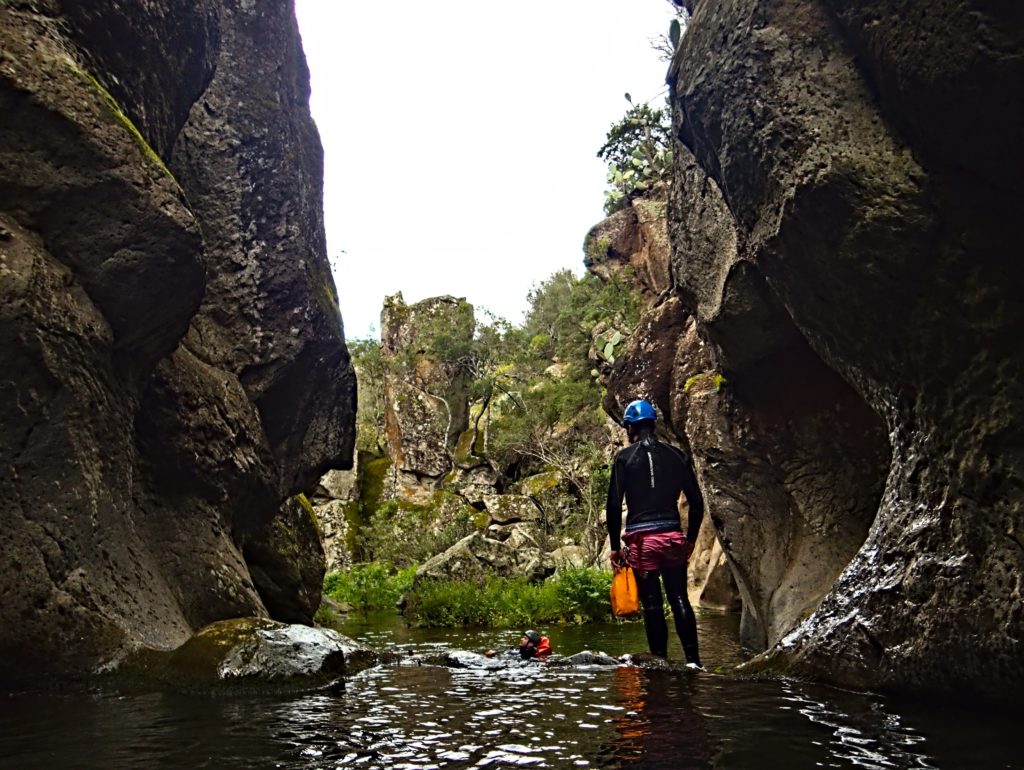
After a short drive we parked the cars on the verge of a sharp hairpin on a quiet road. There was an impressive looking sliding gate with the words “Cafe Caddaris” written on it, but the cafe itself never seems to have been built [a post on the AIC forum indicates that there was a cafe being built in 2014]. We reached a shed like building, turned right (east, upstream) and dropped down into the valley. Kevin lead the way, bushwhacking through thick undergrowth and following a waterpipe until we eventually dropped into the canyon proper. So far so good.
We reached the first pitch, which had nice resin anchors [installed 22/3/2009], but was easily downclimbable on the left. Maybe in higher flow they are more useful? A short swim and then back out, clambering through boulders and pushing past trees.
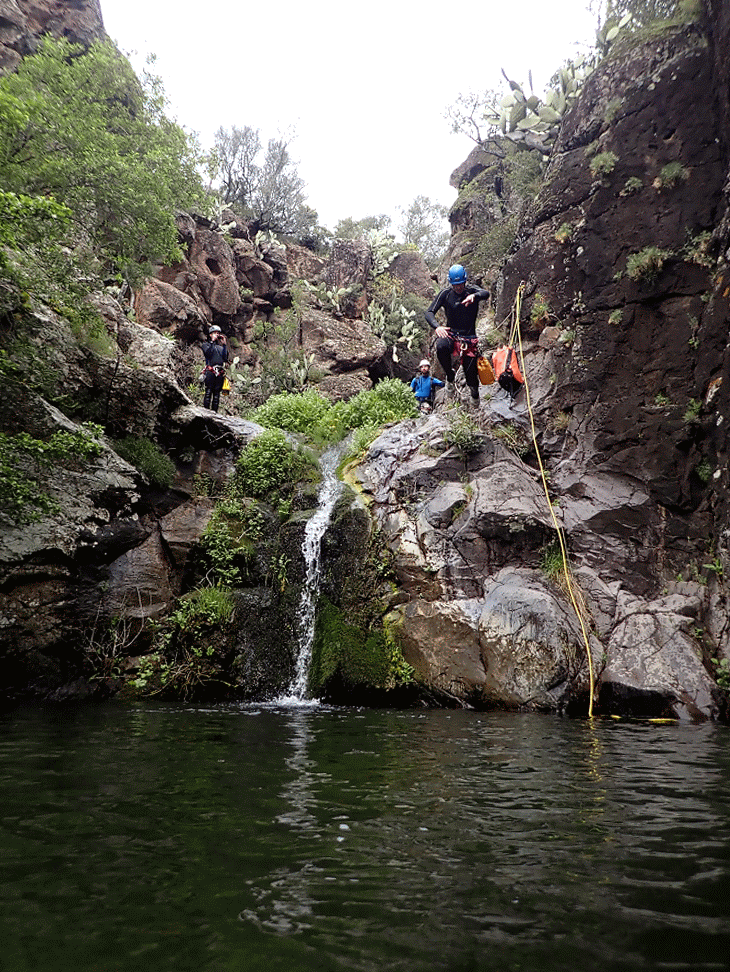
The second pitch looked more fun – some scarily old in situ tat lead to some nice bolts, which we rigged, Alex going down to check the depth first. I did the jump, followed by the others – nice and deep, and the water wasn’t too cold. Again, the section which followed wasn’t particularly pretty, which lots of boulder hopping and dense vegetation.
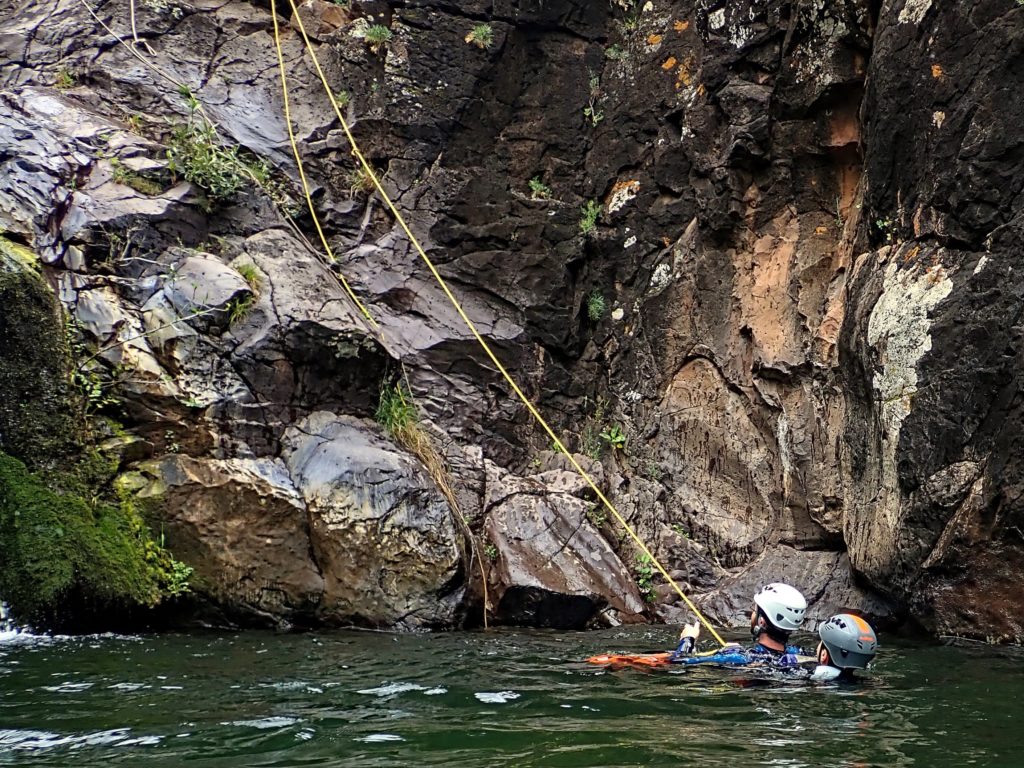
At the final pitch we had a choice between the wet and the dry abseil, on the left and the right respectively. The vote was for the wet route (2 to 1 with 2 abstentions) and I rigged it as a releasable abseil with Rhys being lowered first. Sadly on this day the technique wasn’t very good, and I had to repeatedly load and unload the fig 8 to get the rope to feed through, leading to me repetitively dry humping the rock until Rhys finally splashed down.
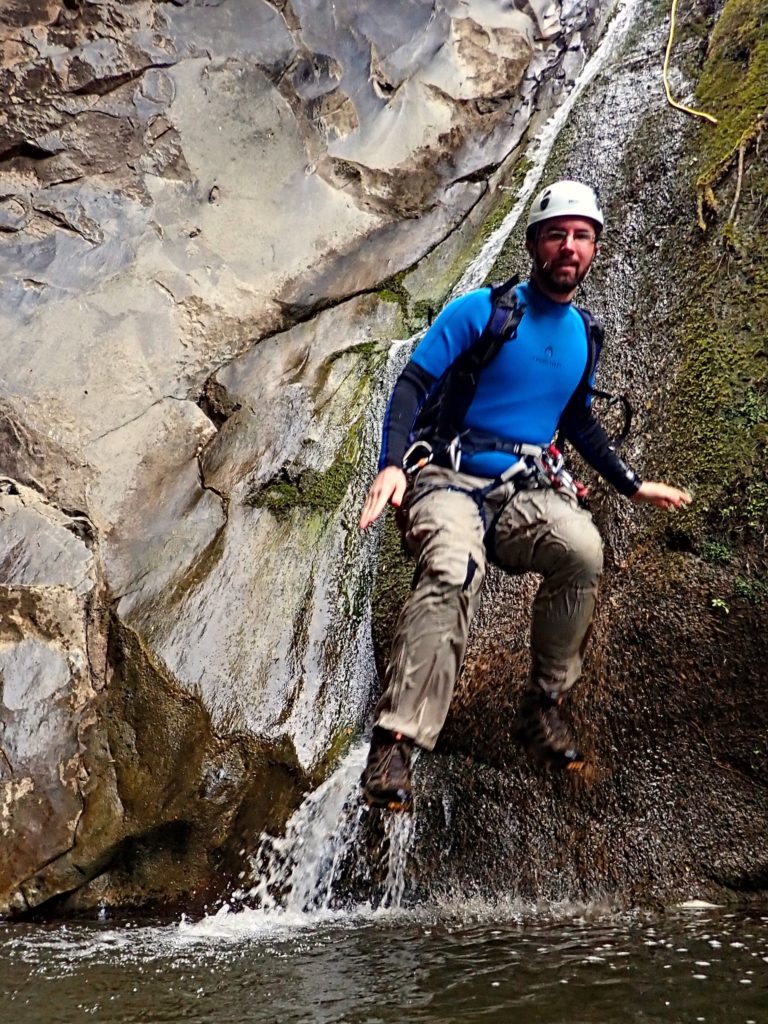
Now time to set the rope length. My my, that’s a lot of rope that needs pulling up. I decided to go down first to check whether it is doable. It is, though the last three or four metres are just a slide down a mossy wet slope. Many of the others do not appreciate this canyoning style drop off – I particularly recall one normally well mannered mathematician letting go of the rope and screaming “Fuck you Rhys!” as he plummeted.

Still, we recovered our sense of humour and plodded on. And yes, it was a bit of a trudge – after those three abseils was another half an hour of battling through vegetation, swimming small pools and dodging bits of litter. Not really the most inspiring canyon. Still, we could see the end of this section coming as the high white walls of Flumineddu loomed in the distance. Our basalt adventure was at an end, but our limestone odyssey was just beginning!
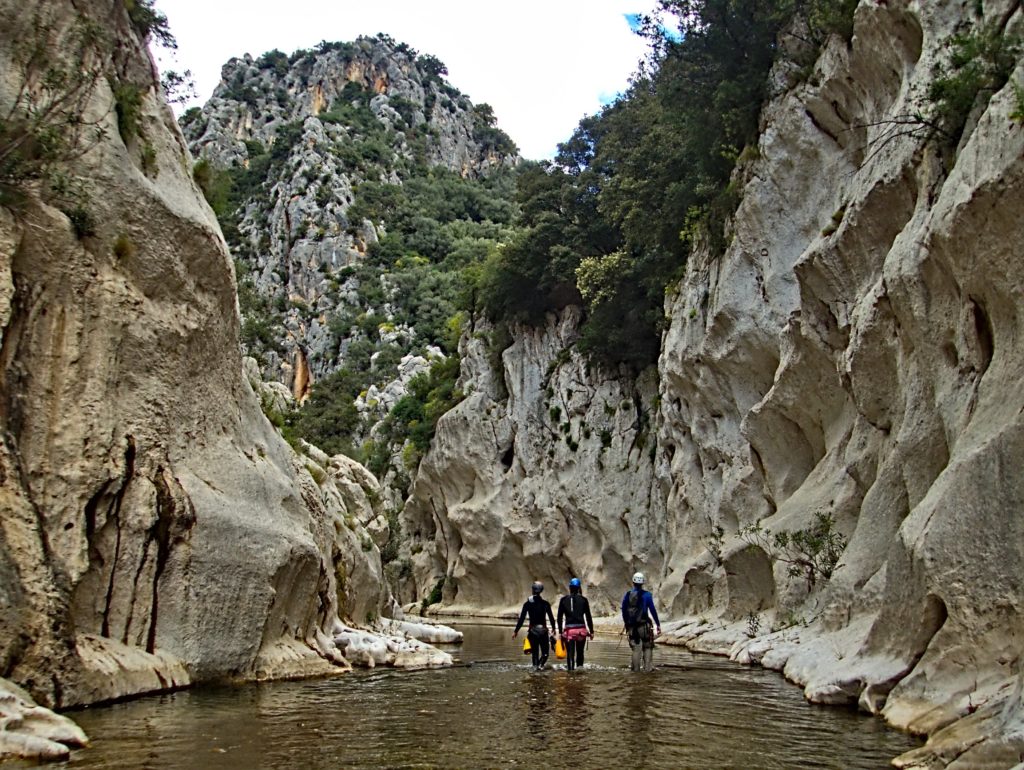
The limestone walls rose high above us, and the canyon was filled with clean, deep water. We’d already been much further upstream in this canyon when we did Cordula Orbisi, which joins the Flumineddu, flows through the Gole Gorroppu and then north. As it passes Dorgali it cuts through an outcrop of limestone, forming the spectacular section of gorge we were now in, with caves and pockets of limestone everywhere.
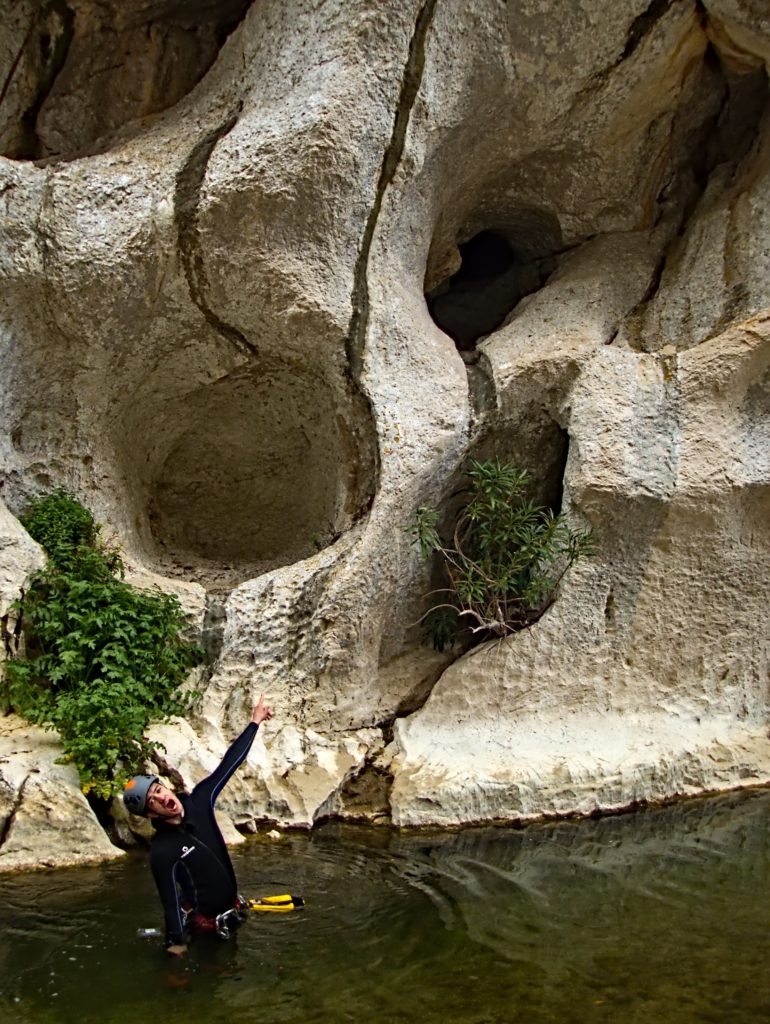
Unfortunately, after 200 m the splendour spoiled as the next tributary joined the Flumineddu. I had read already that this one came from Dorgali, and the treatment plant of that down empties directly into it. The water was brown and smelly, and algae grew abundantly on all the rocks over which it passed. We tried to avoid being in the water, but soon it became impossible. A strong wind rose, and overhead a grey heron swooped and whirled, mocking us with its incredibly loud laugh.

Our description said that there was a track leading down to the Flumineddu, to allow trucks to extract gravel from the riverbed. It didn’t say anything about swimming along a lake to get there, but we didn’t seem to have much choice. So into the brown water we plunged, hoping that most of the colour didn’t come directly from the inhabitants of Dorgali.
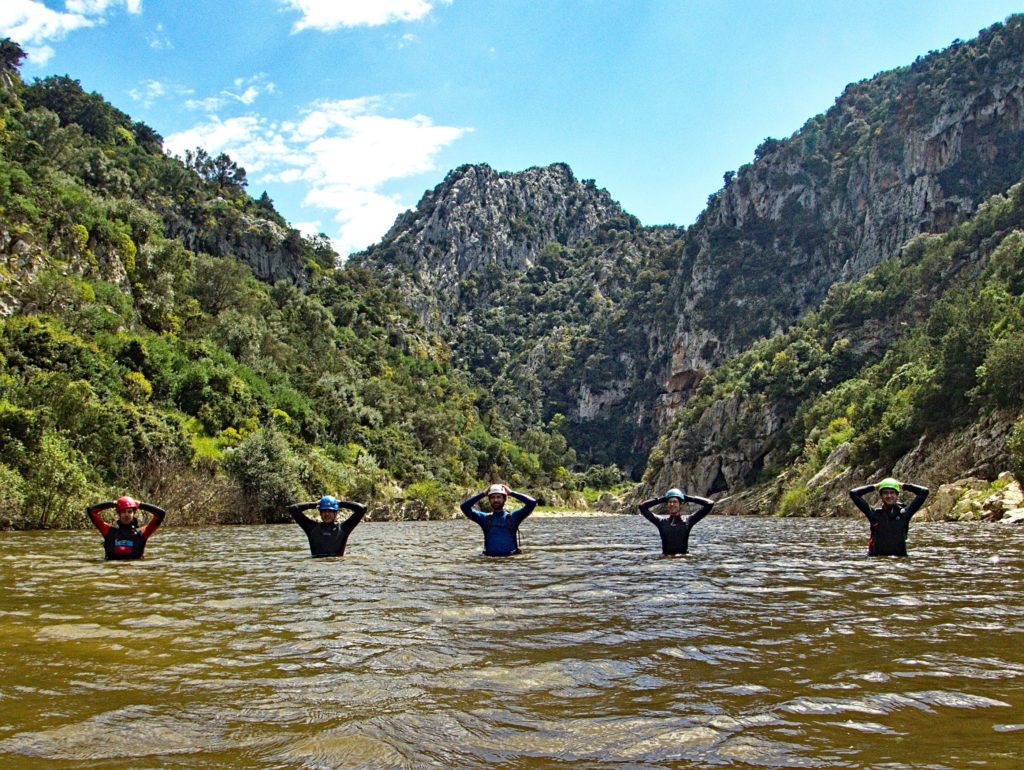
After a relatively long swim in a rather splendid canyon, we found the track and climbed out. It was a bit of a mystery how any gravel could be extracted, however: the track just went underwater! The drowned trees also clearly showed that the water level was several metres higher when we were there than when the German description of the route back had been written. Later checking on Google Earth did show the same story, that sometimes the level is higher, and sometimes lower, the depth being controlled by a dam further downstream.
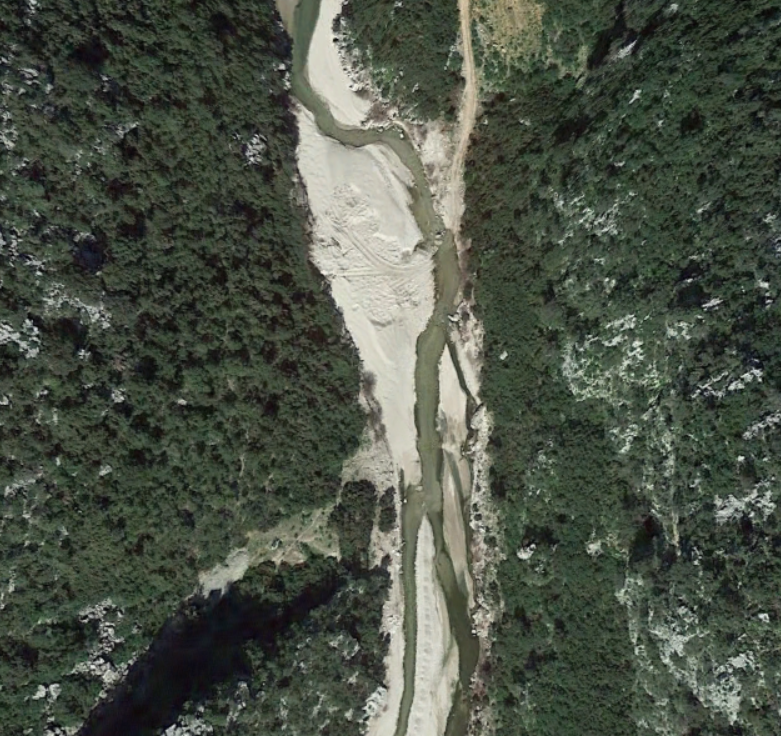
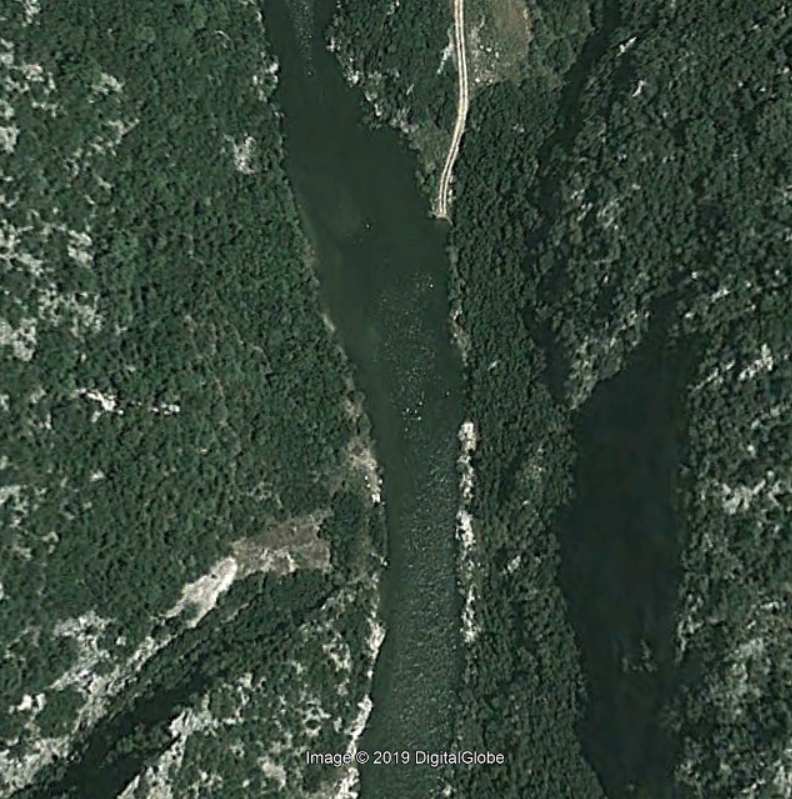
We wandered up the track, past several abandoned buildings and found ourselves in a quarry. Unfortunately, Rhys’ cave phone had got soaked and was no longer functional, so we had to navigate back by guess work and a bit of a random walk – always fun whilst clad in neoprene. Eventually we made it, and we returned home early to relax and prepare for our final day.
Although it was a fun day out, and the section in Flumineddu was stunning, I wouldn’t recommend this canyon. It’s quite short, overgrown and the pollution from Dorgali is really unpleasant. Maybe do it if, like us, you have nothing better to do and are in the area!
